As big signboards around the city declare, the 798 Art District wants to be “The Global Art Destination”.
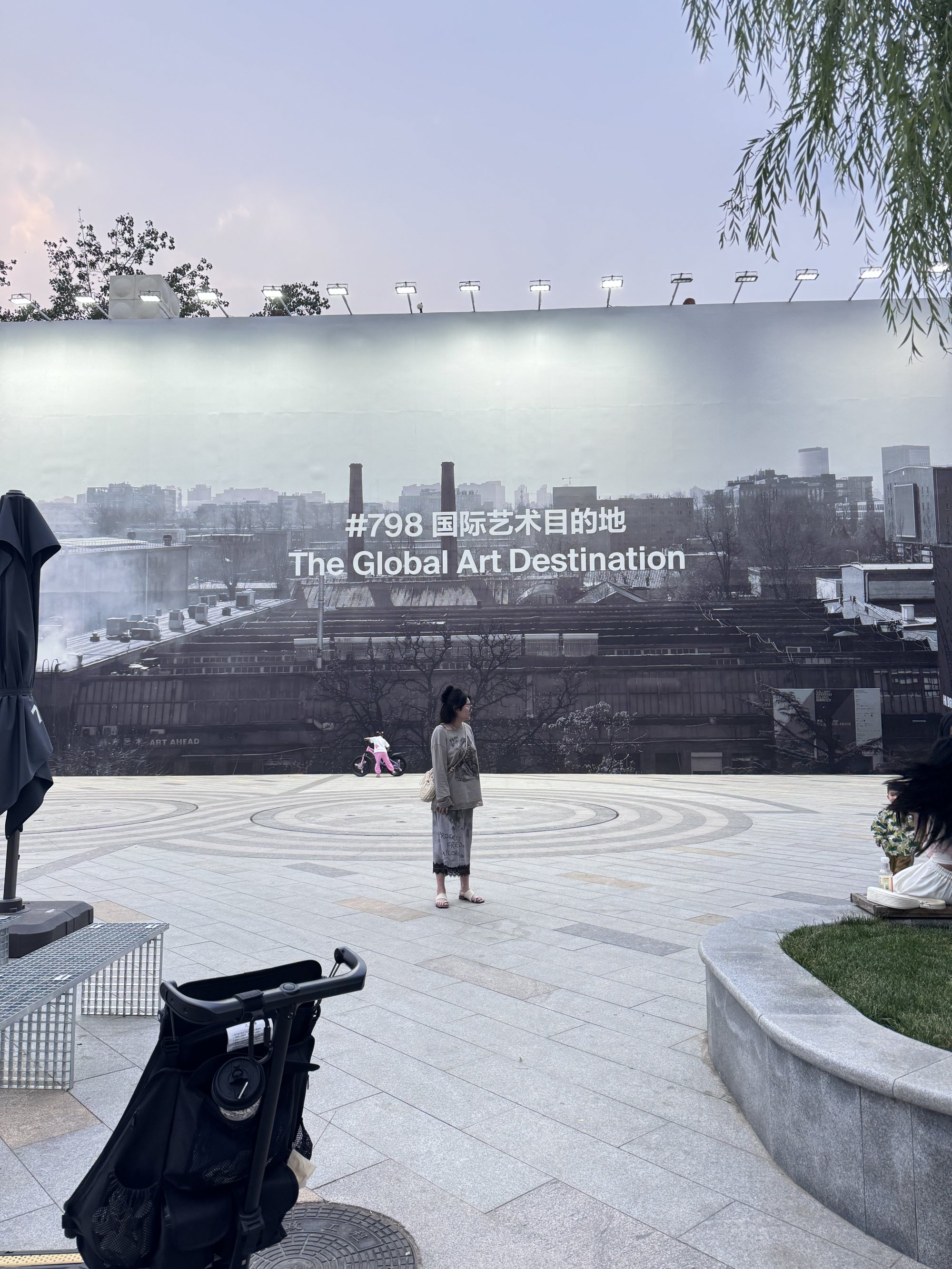
The city’s intellectual and artistic foundation has always made it more than a place to trade art. “But for the last four years, it had felt like Beijing was merely engaging in self-contained activities, isolated from the global art community,” said Li Ning, chief editor of the influential Shanghai-based Art-Ba-Ba online portal.
But the currents may have shifted. A new wave of young collectors has emerged – they made a difference to the Beijing art auctions held earlier in May.
There are new private foundations that support artists working in diverse and non-traditional mediums.
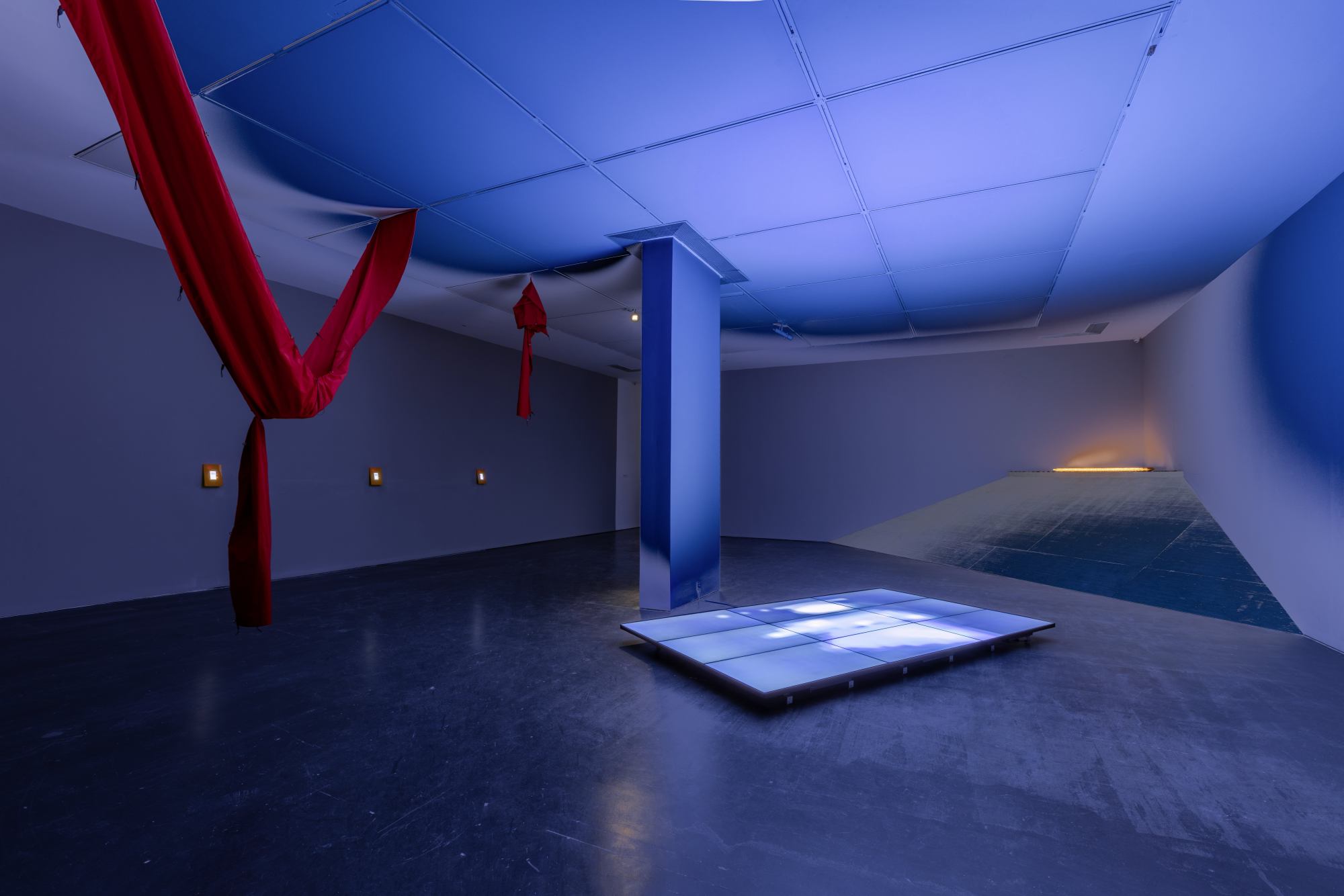
And, importantly, despite reports of heightened censorship by the government, artists and galleries are still presenting powerful shows of work willing to engage directly with social challenges.
For example, in the “Cloud 9” show at Spurs Gallery, Zhou Yan displayed bits and pieces representing his daydreams and life during the pandemic lockdowns.
An eccentric installation featuring a golden sleeping bag resting atop a trapezoid structure, with tent-like fabric suspended from the ceiling, symbolises his longing to flee into the wilderness.
At Tabula Rasa Gallery, which is showing independently rather than as a GWBJ participant, the artist Li Tao has repurposed items like a bed’s headboard and footboard to evoke the physical constraints he experienced during Covid quarantine.
An automatic door, which doesn’t open when approached but rather opens unpredictably, symbolises the lack of control individuals have over their lives. The stark, metallic appearance of Li’s works underscores the discomfort of isolation.
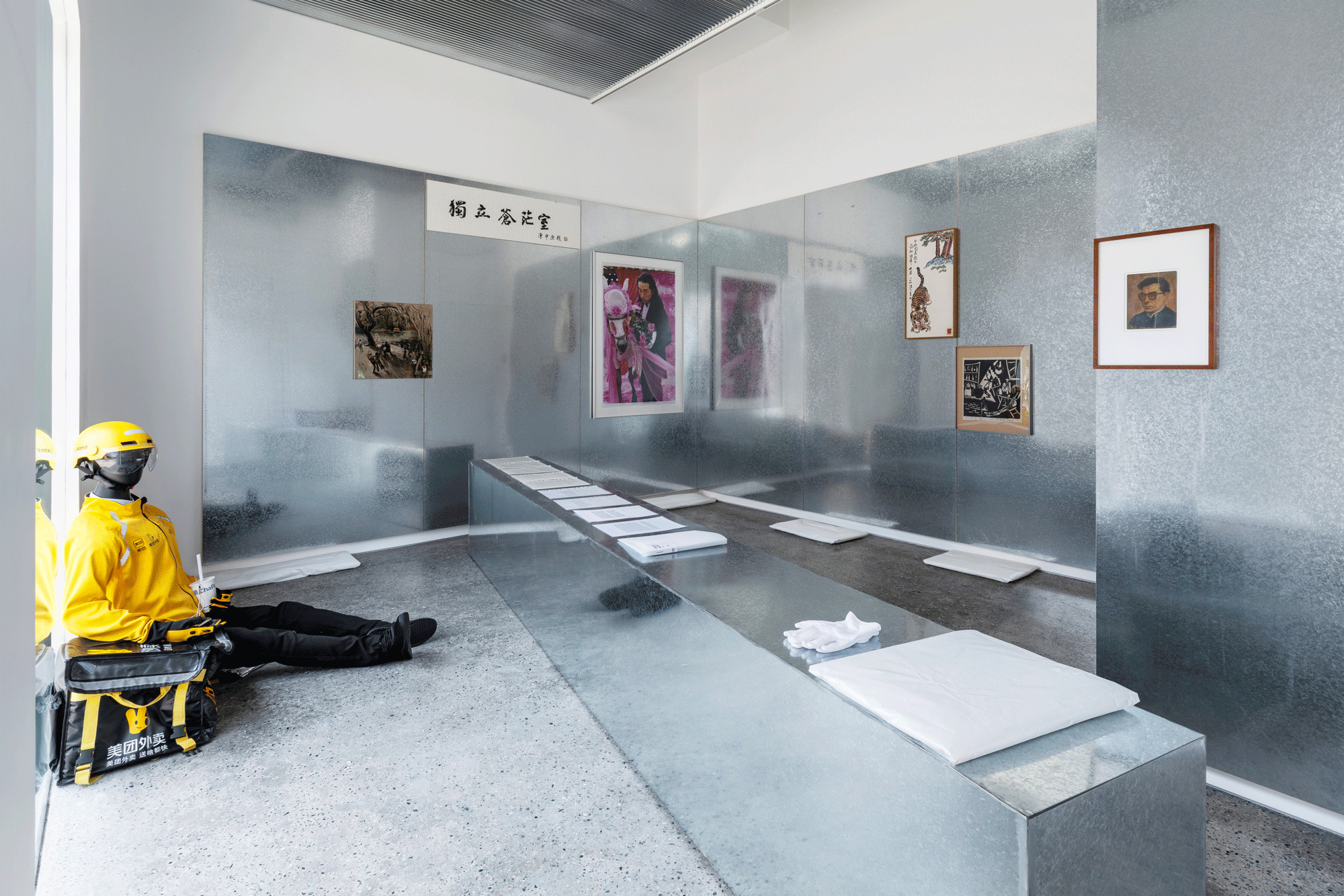
A giant installation features a stadium light that blinks every few seconds, made with materials salvaged from the premises of his independent art foundation in Beijing, which was demolished by the government shortly after he established it in 2023.
At Magician Space, the artist and curator Liu Ding has an exhibition titled “Room of Boundlessness”. The name is borrowed from a poem by the Tang dynasty poet and politician Du Fu, known for reflecting the misery of people’s lives, and is used ironically here to express frustration and angst about contemporary social issues.
A central piece features a mannequin dressed as a Meituan food delivery rider slumped against a wall. One hand clutches a phone displaying viral social media videos powered by an external battery.
Delivery riders, often invisible within the social hierarchy, have become a focal point of life in China in recent years. In Beijing they were ostracised in a campaign to expel its “low-end population” in 2017, then hailed as heroic “frontline workers” during the pandemic. In 2023, strikes by Meituan workers in several Chinese cities raised their visibility.
The artwork evokes the false promises of emancipation in a consumerist society. Even during the riders’ brief moments of rest, the algorithm-driven videos trap them within another system.
There are many other impressive exhibitions, including Zhou Yi-Lun’s “SANLIANZMK” at Beijing Commune, who won GWBJ 2024’s best exhibition award.
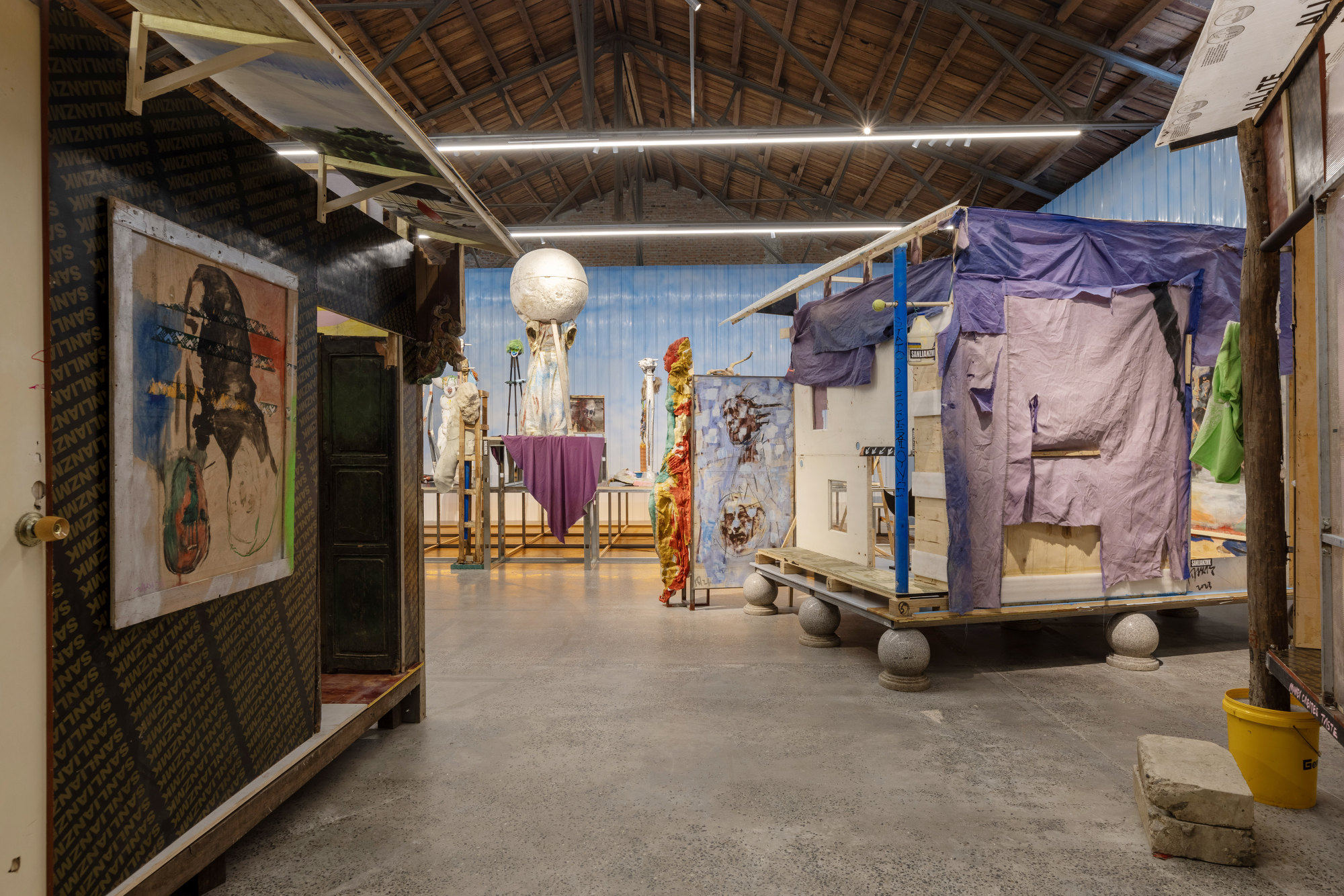
Yang Guangnan’s exhibition at CLC Gallery and Christine Sun Kim and Thomas Mader’s joint exhibition at White Space also received universal praise.
The new “art month” came about after a management overhaul at 798 Art District.
In 2022, SevenStar Group, the stated-owned technology company behind GWBJ and the district, replaced longtime 798 director Wang Yanling amid allegations of misconduct.
Shortly afterwards, Aria Yang took over the role of director of GWBJ from Amber Yifei Wang, who had held the position since 2017. Aria Yang also co-founded The Soil Collection, a private art foundation, in 2023.
“We need to have a big concerted event in Beijing to capture global attention,” Yang says.
In contrast to previous years there was enough buzz to draw visitors from beyond Beijing, including from Hong Kong and Taiwan.
The director of independent art space Parasite Hong Kong, Billy Tang, was there, as was the curator of Frieze Film Seoul and the director of the Passerelle Centre d’art contemporain in France.
Beijing has more serious collectors. By taking part in GWBJ, we got the chance to present our artists’ work in a more elaborate showcase than what is possible within the confines of a four-day fair
Taiwanese gallerists and collectors came despite the rise in tensions between the central government and the administration in Taipei. Each Modern gallery showed for the second year at Beijing Dangdai and GWBJ, while Eslite Gallery opened its second space in the 798 Art District in March.
Eslite Gallery’s director Xiao Li explained that the expansion is the result of the gallery’s decades of collaboration with artists such as Beijing-based Liu Xiaodong and Cai Guo-Qiang, who has a beautifully restored courtyard house in the city. “We follow where our artists go,” she said.
“We have witnessed a lot of crises over the years, like the Third Taiwan Strait Crisis [in 1995 triggered by People’s Liberation Army missile tests] and the 2008 financial crisis, so we are not worried about the current situation, but rather focus on maintaining our trajectory at our own pace.”
The Taiwanese auction house Ravenel and the Taiwan Art Gallery Association hosted their first satellite events in Beijing. Ravenel hosted a cocktail reception with CP Treasury, owned by Thailand-based Charoen Pokphand Group, while the association threw a celebration at Gallery Where, in a traditional Chinese courtyard, or siheyuan, to herald the upcoming Taipei Art Fair and Art Week.
The 8th edition of GWBJ saw well over 30 exhibitions by galleries and institutions in the 798 Art District and other parts of the city.
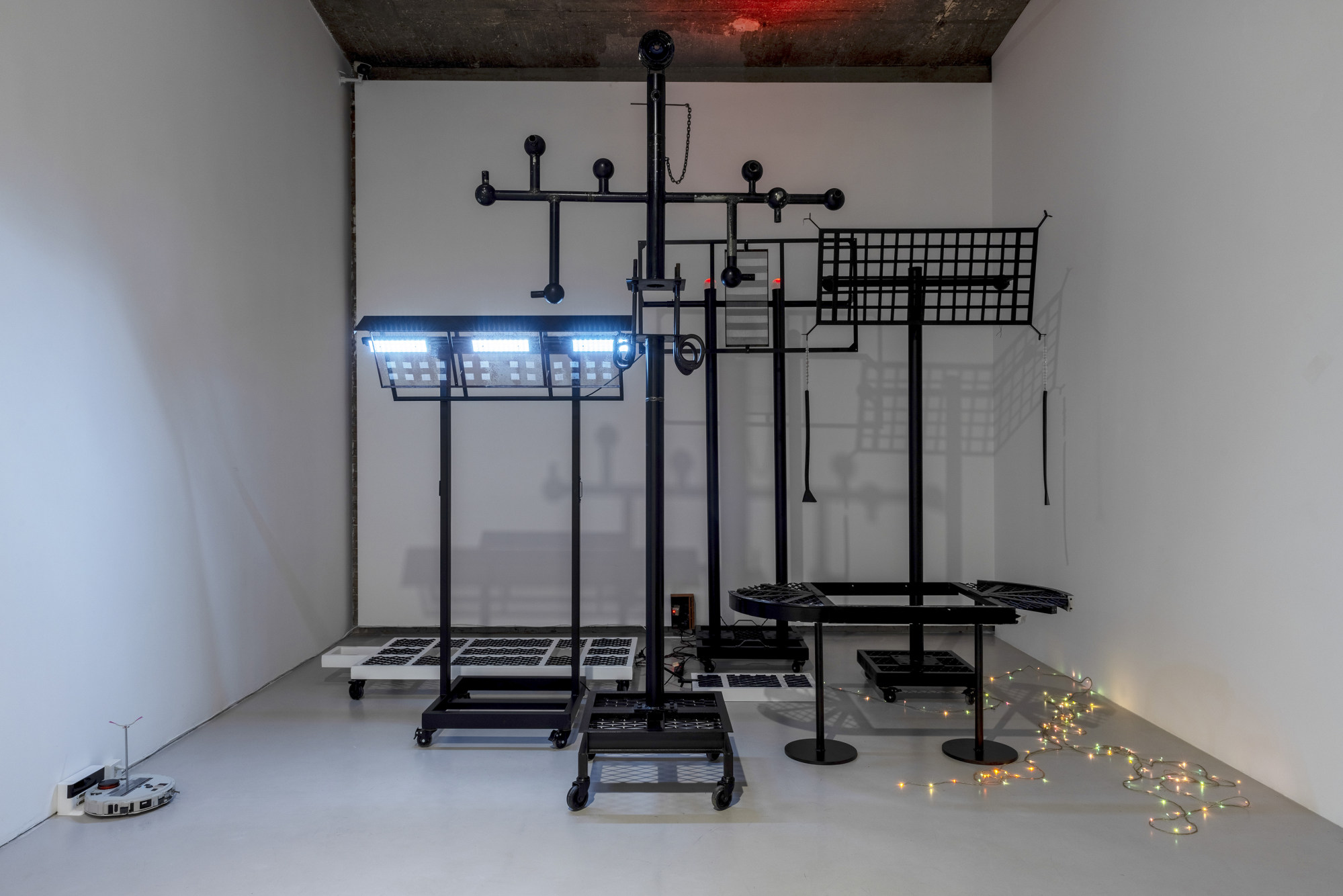
Francois Ho, Shanghai director of Almine Rech Gallery, says having GWBJ at the same time as the fairs gave the gallery more options to present its artists to serious collectors in Beijing. The gallery opened an exhibition of works by Jean-Baptiste Bernadet and Alejandro Cardenas in a pop-up venue within 798 Art District during GWBJ.
“Beijing has more serious collectors. By taking part in GWBJ, we got the chance to present our artists’ work in a more elaborate showcase than what is possible within the confines of a four-day fair.”
The sales picture was mixed, according to gallerists we spoke to during the art fairs. Many, such as Ho, said they continued to find Beijing has a distinctly intellectual ambience and a lot of respect for art generally.
Censorship did rear its head during GWBJ. A sculpture was removed from an exhibit in the 798 Art District; it depicted a torso shielded by umbrellas, which was interpreted as a reference to Hong Kong’s 2014 “umbrella movement” protests against electoral change despite the artist’s intentions being otherwise.
According to a gallerist, scrutiny of art is no longer conducted solely by lay people. Censors now often have a background in art or related fields, making it more challenging to get around restrictions.

Members of the public also found some art too hard to stomach. For example, at Galerie Urs Meile, one of artist Cao Yu’s installations, which includes an oversized posterior that visitors must walk through to reach the main exhibition, has been repeatedly reported by members of the public for being offensive.
The gallery responded by partially obscuring the work for public viewings.
As GWBJ was taking place, news came of galleries and artist studios being evicted at short notice from Shanghai’s West Bund area, with major galleries such as ShanghArt, the artist Ding Yi and the nonprofit Pond Society affected.
Some in Beijing will be hoping that the tide has turned and some of the Shanghai players will look north again.
